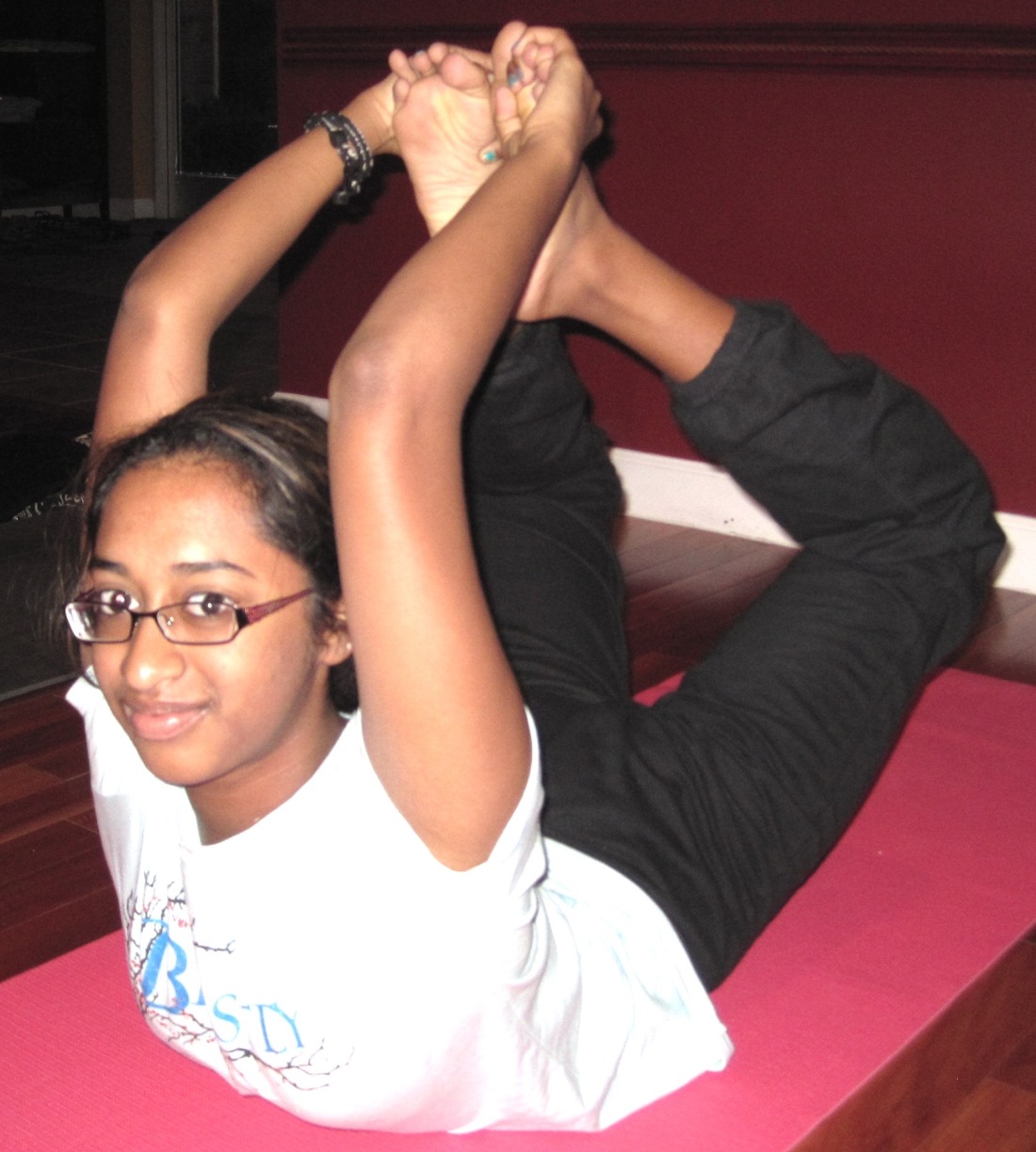Let us continue our discussion on the backward bending poses and focus on the pose called Dhanurasana – धनुरासन -(Bow Pose). In the final position, the pose resembles a bow, ready to shoot an arrow.
Step-by-step
Round one:
- Lie flat on your abdomen with the arms alongside the body. Bring your forehead on the floor and bend the knees. Try to bring the heels close to the buttocks.
- Raise the arms and hold on to the ankles with the two hands. You may keep the knees apart in this round.
- If it is not possible for you to hold your ankles directly, wrap a strap around the fronts of the ankles and hold the free ends of the strap, holding the strap as close to the feet as possible, keeping your arms fully extended.
- On an inhalation, begin to lift your head, neck and chest. Press back into the hands with your feet in an effort to lift the knees and thighs off the floor.
- Continue to breathe in your final position. Maintain your awareness both on the breath as well as the experience of the stretch. Make sure that you do not strain the body at any point.
- Hold the final position only as long as you are comfortable. Please remember that the bow pose involves a deep backward stretch and any effort to deepen the stretch should be done with extreme caution.
- When you are ready to come out of the pose, come down slowly while exhaling and finally release the legs and lie down in the relaxation pose.
Round two:
- Repeat step 1 as above
- Raise the arms and hold on to the ankles with the two hands. In this round, make an effort to bring the feet and knees together. This will deepen the experience of the stretch. If that is not comfortable, repeat what you did in round one.
- Repeat the remaining steps as in round one
Advanced Variation
This advanced variation is intended for those with highly flexible spine. In this pose, instead of keeping the arms alongside the body, you raise the arms overhead, bending the elbows if needed. Try to hold the big toes and then make the effort to straighten the elbows overhead. Bhairavi Remitha, one of my young and flexible yoga students, is demonstrating the pose in the picture.
Contraindications/Cautions
Throughout the pose, maintain awareness on the spine and the breath. If at any time you feel discomfort in the spine, or any other part of the body, you should back off and come out of the pose. People with a weak spine should avoid the Bow Pose and practice only a gentle version of the Half Locust Pose as a back-bending stretch. Those with a weak heart, coronary problems, or high blood pressure should avoid practicing dhanurasana. Avoid this pose if you suffer from peptic ulcers, hernia, intestinal problems, recent or chronic back injury, or headache. It is not advisable for pregnant women, except for highly experienced yoga practitioners who can continue to practice a mild version of the pose during the first trimester only. After the first trimester, pregnant women should completely avoid this pose.
Benefits
- Makes the spine more flexible and stronger
- Stretches the arms and shoulders
- Massages the internal organs like liver, pancreas and the intestines and improves their function.
- Alleviates disorders of the stomach and bowels, cures flatulence, improves digestion, promotes peristaltic action and helps with constipation
- Helpful for sciatica,
- Offers relief in cases of sciatica, slipped disc, varicose veins, hemorrhoids and lower back pain
- Excess fat is reduced especially from the hips, waist, posterior, thighs, and the abdomen.
- Various organs and glands like the reproductive organs as well as the adrenal and prostrate glands are activated
- Stimulates and helps balance the swadhisthana (2nd) and manipura (3rd) chakras


Hi,
I tried dhanurasana on my own and ended up hurting myself. Now,i am facing different problems. Could you please tell me how to undo its damage.
Thanks!!!
Hi Shivangi,
I am sorry that you hurt yourself doing dhanurasana. It is hard for me to guide you remotely. I suggest you find a local yoga instructor who can help. Good luck.